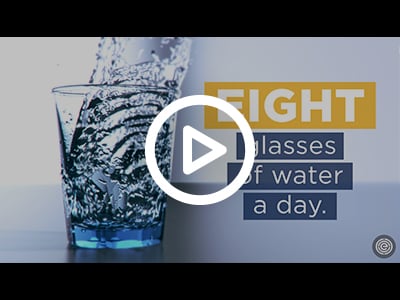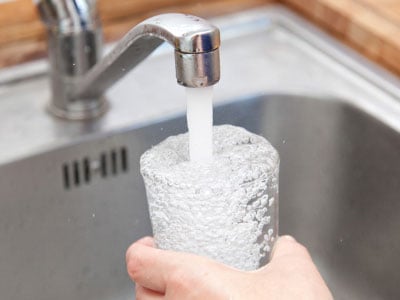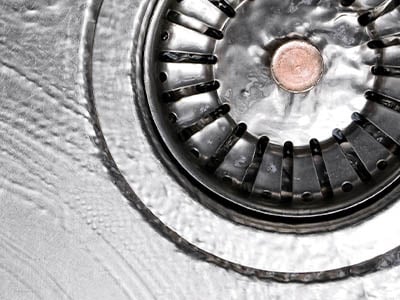Prairie View Ranch WD
EWG's drinking water quality report shows results of tests conducted by the water utility and provided to the Environmental Working Group by the Colorado Department of Public Health & Environment, as well as information from the U.S. EPA Enforcement and Compliance History database (ECHO). For the latest quarter assessed by the U.S. EPA (January 2021 - March 2021), tap water provided by this water utility was in serious violation federal health-based drinking water standards.
Utility Details
- Morgan County, Colorado
- Serves: 30
- Data available: 2014-2019
- Source: Groundwater
Contaminants Detected
9
EXCEED
EWG HEALTH
GUIDELINES
13 Total Contaminants
- Legal does not necessarily equal safe. Getting a passing grade from the federal government does not mean the water meets the latest health guidelines.
- Legal limits for contaminants in tap water have not been updated in almost 20 years.
- The best way to ensure clean tap water is to keep pollution out of source water in the first place.
Looking for a countertop water filter?
Find out which filters earned EWG's recommendation
See the guideContaminants Detected
1,2-Dichloroethane
Potential Effect: cancer7.7x EWG'S HEALTH GUIDELINE1,2-Dichloroethane
more aboutthis contaminant
1,2-Dichloroethane is a volatile carcinogenic chemical used to make plastic products such as polyvinyl chloride.
1,2-Dichloroethane was found at 7.7 times above EWG's Health Guideline.
EWG Health Guideline
This Utility
Legal Limit
National Average
State Average
ppb = parts per billion
Health Risks
The EWG Health Guideline of 0.4 ppb for 1,2-dichloroethane was defined by the California Office of Environmental Health Hazard Assessment as a public health goal, the level of a drinking water contaminant that does not pose a significant health risk. This health guideline protects against cancer.
Pollution Sources

Industry
Filtering Options
Activated Carbon
Reverse Osmosis
Bromoform
Potential Effect: cancer2.7x EWG'S HEALTH GUIDELINEBromoform
more aboutthis contaminant
Bromoform, one of the total trihalomethanes (TTHMs), is formed when chlorine or other disinfectants are used to treat drinking water. Bromoform and other disinfection byproducts increase the risk of cancer and may cause problems during pregnancy. Click here to read more about disinfection byproducts.
Bromoform was found at 2.7 times above EWG's Health Guideline.
EWG Health Guideline
This Utility
National Average
State Average
ppb = parts per billion
Health Risks
The EWG Health Guideline of 0.5 ppb for bromoform was proposed in 2018 by the California Office of Environmental Health Hazard Assessment as a one-in-a-million lifetime risk of cancer. Values greater than one-in-a-million cancer risk level can result in increased cancer cases above one in a million people.
Pollution Sources
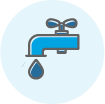
Treatment Byproducts
Filtering Options
Activated Carbon
Reverse Osmosis
Chloroform
Potential Effect: cancer2.4x EWG'S HEALTH GUIDELINEChloroform
more aboutthis contaminant
Chloroform, one of the total trihalomethanes (TTHMs), is formed when chlorine or other disinfectants are used to treat drinking water. Chloroform and other disinfection byproducts increase the risk of cancer and may cause problems during pregnancy.
Chloroform was found at 2.4 times above EWG's Health Guideline.
EWG Health Guideline
This Utility
National Average
State Average
ppb = parts per billion
Health Risks
The EWG Health Guideline of 0.4 ppb for chloroform was proposed in 2018 by the California Office of Environmental Health Hazard Assessment as a one-in-a-million lifetime risk of cancer. Values greater than one-in-a-million cancer risk level can result in increased cancer cases above one in a million people.
Pollution Sources

Treatment Byproducts
Filtering Options
Activated Carbon
Reverse Osmosis
Dibromochloromethane
Potential Effect: cancer14x EWG'S HEALTH GUIDELINEDibromochloromethane
more aboutthis contaminant
Dibromochloromethane, one of the total trihalomethanes (TTHMs), is formed when chlorine or other disinfectants are used to treat drinking water. Dibromochloromethane and other disinfection byproducts increase the risk of cancer and may cause problems during pregnancy. Click here to read more about disinfection byproducts.
Dibromochloromethane was found at 14 times above EWG's Health Guideline.
EWG Health Guideline
This Utility
National Average
State Average
ppb = parts per billion
Health Risks
The EWG Health Guideline of 0.1 ppb for dibromochloromethane was proposed in 2018 by the California Office of Environmental Health Hazard Assessment as a one-in-a-million lifetime risk of cancer. Values greater than one-in-a-million cancer risk level can result in increased cancer cases above one in a million people.
Pollution Sources

Treatment Byproducts
Filtering Options
Activated Carbon
Reverse Osmosis
Nitrate
Potential Effect: cancer4.5x EWG'S HEALTH GUIDELINENitrate
more aboutthis contaminant
Nitrate, a fertilizer chemical, frequently contaminates drinking water due to agricultural and urban runoff, and discharges from municipal wastewater treatment plants and septic tanks. Excessive nitrate in water can cause oxygen deprivation in infants and increase the risk of cancer. Click here to read more about nitrate.
Nitrate was found at 4.5 times above EWG's Health Guideline.
EWG Health Guideline
This Utility
Legal Limit
National Average
State Average
ppm = parts per million
Health Risks
The EWG Health Guideline of 0.14 ppm for nitrate was defined by EWG . This health guideline protects against cancer and harm to fetal growth and development.
Pollution Sources

Agriculture

Runoff & Sprawl

Naturally Occurring
Filtering Options
Reverse Osmosis
Ion Exchange
Nitrate and nitrite
Potential Effect: cancer5.7x EWG'S HEALTH GUIDELINENitrate and nitrite
more aboutthis contaminant
Nitrate and nitrite enter water from fertilizer runoff, septic tanks and urban runoff. These contaminants can cause oxygen deprivation for infants and increase the risk of cancer. Nitrite is significantly more toxic than nitrate. Click here to read more about nitrate.
Nitrate and nitrite was found at 5.7 times above EWG's Health Guideline.
EWG Health Guideline
This Utility
Legal Limit
National Average
State Average
ppm = parts per million
Health Risks
The health guideline of 0.14 parts per million, or ppm, for nitrate and nitrite is based on the equivalent health guideline for nitrate, as defined in a peer-reviewed scientific study by EWG. This guideline represents a one-in-one-million annual cancer risk level.Pollution Sources

Agriculture

Runoff & Sprawl

Naturally Occurring
Filtering Options
Reverse Osmosis
Ion Exchange
Radium, combined (-226 & -228)
Potential Effect: cancer20x EWG'S HEALTH GUIDELINERadium, combined (-226 & -228)
more aboutthis contaminant
Radium is a radioactive element that causes bone cancer and other cancers. It can occur naturally in groundwater, and oil and gas extraction activities such as hydraulic fracturing can elevate concentrations.
Radium, combined (-226 & -228) was found at 20 times above EWG's Health Guideline.
EWG Health Guideline
This Utility
Legal Limit
National Average
State Average
pCi/L = picocuries per liter
Health Risks
EWG applied the health guideline of 0.05 pCi/L, defined by the California Office of Environmental Health Hazard Assessment as a public health goal for radium-226, to radium-226 and radium-228 combined. This health guideline protects against cancer.Pollution Sources

Industry

Naturally Occurring
Filtering Options
Reverse Osmosis
Ion Exchange
Total trihalomethanes (TTHMs)†
Potential Effect: cancer25x EWG'S HEALTH GUIDELINETotal trihalomethanes (TTHMs)
more aboutthis contaminant
Trihalomethanes are cancer-causing contaminants that form during water treatment with chlorine and other disinfectants. The total trihalomethanes group includes four chemicals: chloroform, bromodichloromethane, dibromochloromethane and bromoform.
Total trihalomethanes (TTHMs) was found at 25 times above EWG's Health Guideline.
EWG Health Guideline
This Utility
Legal Limit
National Average
State Average
ppb = parts per billion
Health Risks
The health guideline of 0.15 parts per billion, or ppb, for the group of four trihalomethanes, or THM4/TTHM, was defined in a peer-reviewed scientific study by EWG and represents a one-in-one-million lifetime cancer risk level.Pollution Sources

Treatment Byproducts
Filtering Options
Activated Carbon
Reverse Osmosis
Uranium
Potential Effect: cancer27x EWG'S HEALTH GUIDELINEUranium
more aboutthis contaminant
Uranium is a known human carcinogen. The federal legal limit for uranium is set at 30 micrograms per liter (corresponding to parts per billion), but utilities can also report uranium in picocuries per liter (pCi/L), which is a measure of radioactivity in water. EWG translated all uranium results to pCi/L using a conversion factor developed by the EPA. With this conversion approach, the limit of 30 ppb corresponds to 20 pCi/L. Drinking water with this much uranium would cause more than 4.6 cancer cases in a population of 100,000. California set a public health goal for uranium of 0.43 pCi/L.
Uranium was found at 27 times above EWG's Health Guideline.
EWG Health Guideline
This Utility
Legal Limit
National Average
State Average
pCi/L = picocuries per liter
Health Risks
The EWG Health Guideline of 0.43 pCi/L for uranium was defined by the California Office of Environmental Health Hazard Assessment as a public health goal, the level of a drinking water contaminant that does not pose a significant health risk. Three most common uranium isotopes are U-234, U-235 and U-238. All isotopes of uranium are radioactive, and the total radioactivity depends on the ratio of isotopes. This health guideline protects against cancer.
Pollution Sources

Industry

Naturally Occurring
Filtering Options
Reverse Osmosis
Ion Exchange
Includes chemicals detected in 2017-2019 for which annual utility averages exceeded an EWG-selected health guideline established by a federal or state public health authority; radiological contaminants detected between 2014 and 2019.
† HAA5 is a contaminant group that includes monochloroacetic acid, dichloroacetic acid, trichloroacetic acid, monobromoacetic acid and dibromoacetic acid. HAA9 is a contaminant group that includes the chemicals in HAA5 and bromochloroacetic acid, bromodichloroacetic acid, chlorodibromoacetic acid and tribromoacetic acid. TTHM is a contaminant group that includes bromodichloromethane, bromoform, chloroform and dibromochloromethane.
Chromium (total)
more aboutthis contaminant
Chromium is a naturally occurring metal, but industrial uses can elevate its levels in water. One form, hexavalent chromium, causes cancer. Total chromium is not a good indicator of the amount of hexavalent chromium in drinking water.
How your levels compare
This Utility
Legal Limit
National Average
State Average
ppb = parts per billion
Pollution Sources

Industry

Naturally Occurring
Filtering Options
Reverse Osmosis
Ion Exchange
Fluoride
more aboutthis contaminant
Fluoride occurs naturally in surface and groundwater and is also added to drinking water by many water systems.
How your levels compare
This Utility
Legal Limit
National Average
State Average
ppm = parts per million
Pollution Sources

Treatment Byproducts
Filtering Options
Reverse Osmosis
Selenium
more aboutthis contaminant
Selenium is an essential element in diets. But too much selenium can decrease thyroid hormone production and cause hair loss, skin lesions and brittle fingernails.
How your levels compare
EWG Health Guideline
This Utility
Legal Limit
National Average
State Average
ppb = parts per billion
Health Risks
The EWG Health Guideline of 30 ppb for selenium was defined by the California Office of Environmental Health Hazard Assessment as a public health goal, the level of a drinking water contaminant that does not pose a significant health risk. This health guideline protects against hair loss and nail damage.
Pollution Sources

Industry

Naturally Occurring
Filtering Options
Reverse Osmosis
Styrene
more aboutthis contaminant
Styrene is a volatile cancer-causing chemical used for manufacturing Styrofoam (polystyrene) and other plastics. Releases from industrial production sites and hazardous waste landfills cause styrene contamination in drinking water.
How your levels compare
EWG Health Guideline
This Utility
Legal Limit
National Average
State Average
ppb = parts per billion
Health Risks
The EWG Health Guideline of 0.5 ppb for styrene was defined by the California Office of Environmental Health Hazard Assessment as a public health goal, the level of a drinking water contaminant that does not pose a significant health risk. This health guideline protects against cancer.
Pollution Sources

Industry
Filtering Options
Activated Carbon
Reverse Osmosis
Includes chemicals detected in 2017-2019 for which annual utility averages were lower than an EWG-selected health guideline established by a federal or state public health authori.
Other Contaminants Tested
✕Prairie View Ranch WD compliance with legally mandated federal standards:
- From April 2019 to March 2021, Prairie View Ranch WD did not comply with health-based drinking water standards.
- 12 QUARTERSin violation of any federal drinking water standard from April 2019 to March 2021
- Over the last 3 years this water utility has spent 2 QUARTERSin significant violation of federal drinking water standards
Information in this section on Prairie View Ranch WD comes from the U.S. EPA Enforcement and Compliance History Online database (ECHO).
LEARN MORE ABOUT THIS UTILITYWater Filters That Can Reduce Contaminant Levels
| Contaminant | Activated Carbon | Reverse Osmosis | Ion Exchange |
| CONTAMINANTS ABOVE HEALTH GUIDELINES | |||
| 1,2-Dichloroethane | ✔ | ✔ | |
| Bromoform | ✔ | ✔ | |
| Chloroform | ✔ | ✔ | |
| Dibromochloromethane | ✔ | ✔ | |
| Nitrate | ✔ | ✔ | |
| Nitrate & nitrite | ✔ | ✔ | |
| Radium, combined (-226 & -228) | ✔ | ✔ | |
| Total trihalomethanes (TTHMs) | ✔ | ✔ | |
| Uranium, combined (pCi/L) | ✔ | ✔ | |
| OTHER CONTAMINANTS DETECTED | |||
| Chromium (total) | ✔ | ✔ | |
| Fluoride | ✔ | ||
| Selenium | ✔ | ||
| Styrene | ✔ | ✔ | |
Take Action
Contact Your Local Official
One of the best ways to push for cleaner water is to hold accountable the elected officials who have a say in water quality – from city hall and the state legislature to Congress all the way to the Oval Office – by asking questions and demanding answers.
LEARN MOREFilter Out Contaminants
Check out our recommendations for filters to protect your water against the detected contaminants.
EWG’S WATER FILTER GUIDE